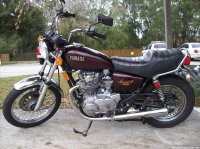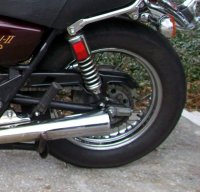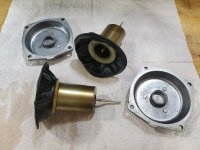pretty much every thing has been said...........80G SII frame visually, (tins/rear guard), is the same as the 78SE/79SF/79SII but the real difference is the swing arm and rear wheel.
NOTE; 79SII and the 80G SII have spoke wheels with a drum brake so he swing-arm has different brackets to accommodate the change from the disk brake to drum brake.................The 78/79 swing arm has brackets at the rear of the swig-arm that are removable so the axle can slide out of the swing arm from the rear. 80 and later swing-arms are solid so the axle has to slide out from the side.
NOTE; This may not be true for the 80G/SII swing-arm as per your pics
Edit;......Looking at your new pics your swing arm has the brackets that are removable so the axle, along with the wheel, can be removed from the rear of the swing arm, once the chain has been broken if it has the chain link that can be removed.
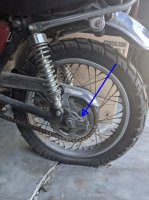
Can see what i mean about the early swing-arms, up to 80, here
http://www.xs650.com/threads/rear-brake-conversion-drum-to-disk-or-disk-to-drum.51944/
Mikes XS sells the 80G/SII wiring loom. 650Direct, (in Canada), also sell the same one and they both reference the same #no so it should be good to use without any mods. No guarantee about any mods but they shouldn't be to much and you don't have to worry about bypassing relays that are on the 81-84 models
MikesXS https://www.mikesxs.net/yamaha-xs650-wire-loom-80g-sp-ii-3g0-82590-50-oem-3g0-82590-50.html
650 Direct https://www.xs650direct.com/products?make=22&year=16&model=105&category=144
Having an 81 motor doesn't change a thing from having an 80 motor, They both have Factory TCI ignitions and the wiring on the igniter should be the same 6 pin coupling with the same colour wires
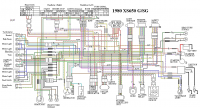
Vin no at the top of the chart
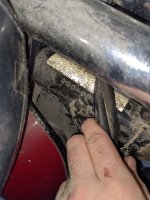
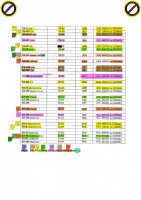
Post #4 i posted pics, for reference,of the 79SII and 80G/SII
NOTE; 79SII and the 80G SII have spoke wheels with a drum brake so he swing-arm has different brackets to accommodate the change from the disk brake to drum brake.................The 78/79 swing arm has brackets at the rear of the swig-arm that are removable so the axle can slide out of the swing arm from the rear. 80 and later swing-arms are solid so the axle has to slide out from the side.
NOTE; This may not be true for the 80G/SII swing-arm as per your pics
Edit;......Looking at your new pics your swing arm has the brackets that are removable so the axle, along with the wheel, can be removed from the rear of the swing arm, once the chain has been broken if it has the chain link that can be removed.

Can see what i mean about the early swing-arms, up to 80, here
http://www.xs650.com/threads/rear-brake-conversion-drum-to-disk-or-disk-to-drum.51944/
Mikes XS sells the 80G/SII wiring loom. 650Direct, (in Canada), also sell the same one and they both reference the same #no so it should be good to use without any mods. No guarantee about any mods but they shouldn't be to much and you don't have to worry about bypassing relays that are on the 81-84 models
MikesXS https://www.mikesxs.net/yamaha-xs650-wire-loom-80g-sp-ii-3g0-82590-50-oem-3g0-82590-50.html
650 Direct https://www.xs650direct.com/products?make=22&year=16&model=105&category=144
Having an 81 motor doesn't change a thing from having an 80 motor, They both have Factory TCI ignitions and the wiring on the igniter should be the same 6 pin coupling with the same colour wires

Vin no at the top of the chart


Post #4 i posted pics, for reference,of the 79SII and 80G/SII
Last edited:


